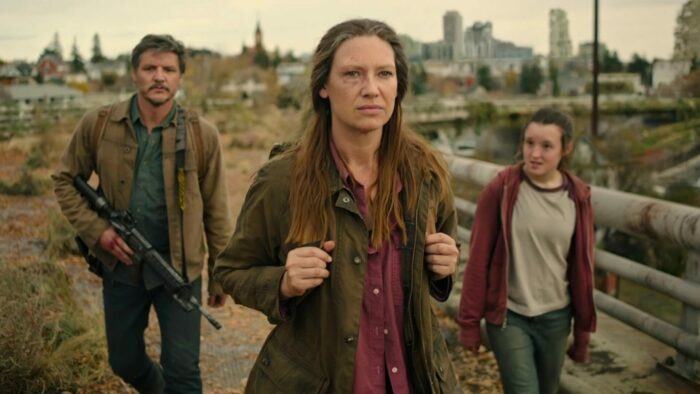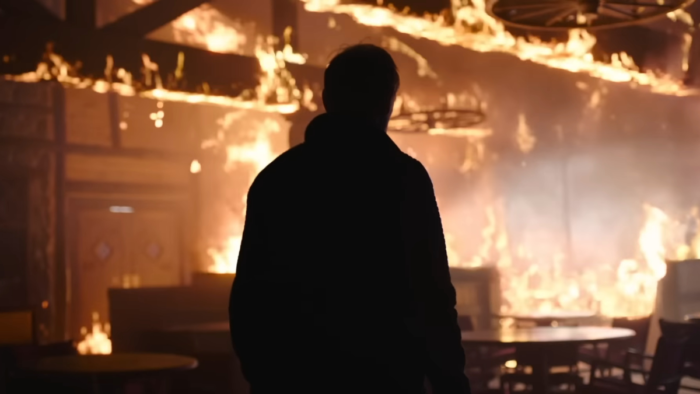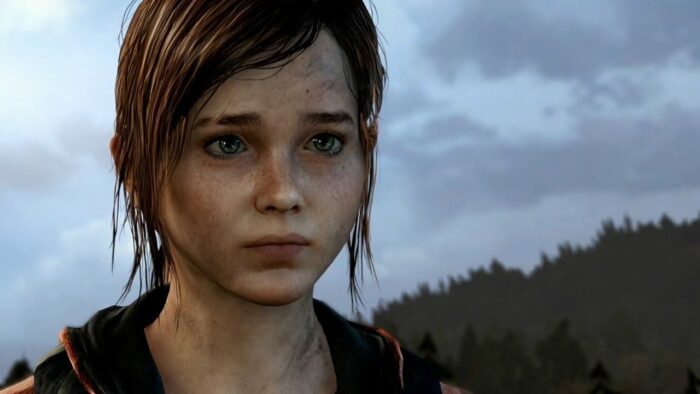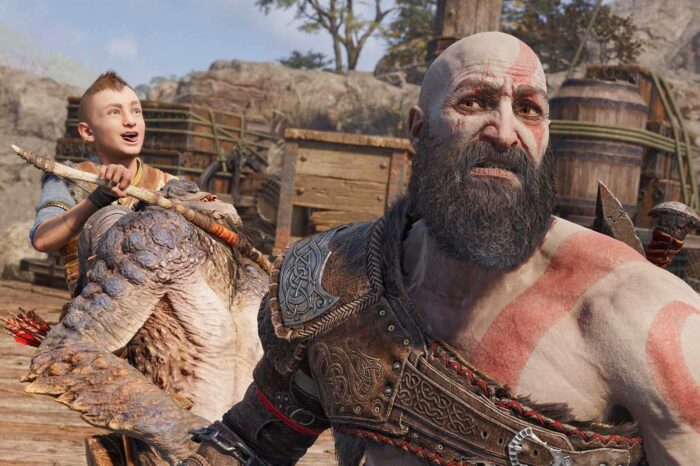Everyone knows about The Last of Us, and everyone knows it’s great. What not everyone knows about just yet—though they will—is the complicated range of effects its source text has had over the last ten years on the “AAA” video game industry and, in particular, games criticism. The HBO series has widely been hailed as The First Truly Great Video Game Adaptation™ in live action, blowing away the expectations of the non- or casual-gaming public who, as entertainment journalists and cringey TikToks seem to suggest, apparently thought video games were all still Pac-Man.
The latter assumption is familiar to lifestyle gamers who have for decades been used to various flavors of condescension about their pastime, both from outside the world of gaming and within. For an incredibly exhaustive exploration of this, allow me to direct you to this three-hour “review” of Pac-Man—both the entire game franchise, and the very cultural concept—by video gaming’s inarguable great auteur of riveting personal essayism and pathologically in-depth analysis.
This celebration of The Last of Us as the first great “video game movie” is another sentiment that comes as less than a surprise to many seasoned gamers. Though any adaptation can of course be done poorly, in some ways this feels like it was always the franchise’s destiny: we who were there already knew that the original TLOU was itself hailed as at least the fourth or fifth First Truly Cinematic Video Game™. (The correct answer is, of course, the original Metal Gear Solid.)
Allow me to introduce myself: my name is Sinistra Black (she/her), but you can call me Sin—like a crime against God. (I came up with that in a dream.) I consume absolutely unhealthy quantities of film and television so you don’t have to. This is the first installment of a new regular column in which I’ll be critically examining the TV I’m watching or thinking about each week, sometimes focused on current trending series and sometimes not.
I myself am a writer-director, so my criticism tends to focus on examining structure and craft, with an eye toward how well a work executes on its own implied aspirations. I’m also a Politics Bitch, so my media analysis usually considers social impact and cultural context. I invite you to join my newsletter and help keep me alive!
Now before we get into the nitty-gritty of how streaming TV is finally doomed, let’s back up a bit and give the series its due.
The remainder of this article contains ***SPOILERS*** for the entire first season of The Last of Us and, by extension, the original The Last of Us game and its Left Behind expansion.

Lest I sound like the contrarian scold I am, I will be very clear: The Last of Us is excellent.
The show has achieved something we’ve rarely seen in adaptations of any kind: a near-perfect balance of adherence to, and diversion from, the source material. Many passages in the series recreate scenes and settings from the game so faithfully that, if you haven’t replayed it in a while, you might wonder if they actually used the game’s shots as storyboard.
At the same time, most of the season’s brightest highlights have centered fresh variations and expansions on the game’s world—especially in the all-time third episode, “Long, Long Time,” which famously builds two minor, barely-there characters out into an instant-classic love story and standalone mini-film; and Episode 7, “Left Behind,” a quietly renewed take on Ellie and Riley’s heartbreaking backstory as originally depicted in the game’s expansion DLC of the same name.
In some cases, even seemingly minor adjustments to the source material turn out to be narratively superior. While I generally dislike HBO Max’s post-credits “Inside the Episode” clips for the way they can shatter the spell and explicate too much of a show’s subtext, those appended to The Last of Us have offered some meaningful insights around things like the almost imperceptible decision to do away with the zombie infection spreading via airborne spores. Co-creator Craig Mazin astutely observes why locations with contaminated air work extremely well as a game mechanic but create a bevy of reality-testing hurdles for a live action story.
In all cases, whether sticking to the text or embellishing it, The Last of Us continuously aches with respect and admiration for The Last of Us. It’s palpable in every scene, every episode, every Craig Mazin interview about how brilliant Neil Druckmann is and every Neil Druckmann interview about how brilliant Craig Mazin is. Even if the show hadn’t met the high bar of quality that it has, this respect for a beloved source text and for the collaborative process of adaptation would still be admirable.

Of course, this isn’t to say that the show is without flaw. As was also the case in Mazin’s Chernobyl—which I intensely disliked for both aesthetic and philosophical reasons—the virtual backdrops are sometimes too noticeable and reality-breaking (more so than in the other half of Pedro Pascal’s lock on TV relevance, the more fantastical Mandalorian).
The first two episodes are pocked with unnecessary, quickly dropped threads, like the pilot’s cheesy cold open styled as an old-fashioned TV roundtable on the possibility of a fungal pandemic—which is also a story element that ends up being far less emphasized than it is in the game. Then there’s the troublingly oblivious choice to assign the outbreak an Asian origin—via characters who are never seen again—which is one of several elements with deeply unfortunate timing relative to today’s climate of right-wing conspiracy delusion. (The global plague of rising xenophobia and nationalism, it must be said, is itself not coincidental with the revived popularity of zombie-apocalypse narratives).
More confusingly, Episode 8‘s fiery boss battle and the season finale‘s climactic confrontation between Joel and the Fireflies are both rushed through much too quickly, not allowing for an appropriate buildup of tension and suspense—disappointing especially, but not exclusively, for TLOU game experiencers who recall both sequences as iconic, incredibly tense dramas of stealth and strategy against overwhelming odds.
The latter instance is especially egregious, even in strict television/cinematic terms: this is the hotly anticipated finale of the defining show of the year so far, and Joel’s dramatic, violent turn against the very faction he and Ellie spent all season searching for is reduced to a goddamn music montage.
Tonally jarring and utterly baffling as a narrative choice, this completely undercuts the drama and weight of the conflict, taking us out of the story’s reality with an uncomfortable (bad version) sense of distance and detachment. At exactly the moment when all scoring and non-diegetic audio should cut out to let us fully inhabit the anxiety of a desperate survival scenario—where every little crunch or exhale could represent the difference between life and death—instead the in-fiction sound drowns away to a watery muffle, while an inexplicably melancholic piece of music swells up to further deaden the energy of the image. The piece in question doesn’t even fit into the spare, Western-inflected Gustavo Santaolalla musical aesthetic that has thus far defined both iterations of The Last of Us.
This choice also has unintended semiotic content: it alters the emotional resonance, the very meaning of what we’re watching. Where in the game this sequence is correctly positioned as an exhausting, extended, knock-down-drag-out battle, with Joel running down to his last few scraps of resources and barely making it through the sea of heavily armed Fireflies, the finale’s sudden aesthetic shift actually reframes Joel’s victory to feel like a foregone conclusion. This undermines any sense of stakes we could—and should!—feel throughout it, and renders Joel no longer a desperate man making a difficult, morally hazy decision, but a wholly remorseless killing machine; an unfeeling, inhuman Terminator with no chance of failure or redemption.
The weak editing of the finale’s climax actually makes Joel more evil.
Craig Mazin clearly does understand the subtext and nuances of The Last of Us, which is at its core a moral meditation on the problems of personal vs. collective need; American-style capital-I Individualism; and perhaps most of all, toxic masculinity. If the post-credits clips of Mazin breaking down the process aren’t evidence enough, there’s this wonderful Vulture interview where he articulates it in no unclear terms: “Yes, Joel is the hero, but we have to interrogate how we feel about our heroes. Heroes of the kind that we see in comic books, that’s bullshit. There’s no such thing.”
It’s in that very spirit that I offer the notes above and below. We must be relentlessly honest, critical, and context-hungry in our assessments of popular media, and even more so of the media we like—which is to say, the media that has successfully enchanted us, placed us under its spell. There’s no denying that The Last of Us is, for the second time, a shining example of well made narrative art, which is precisely why we must be concerned with where it falters; there’s also no denying that The Last of Us is, for the second time, a watershed moment and turning point in pop culture—which is precisely why we must be attentive to where it will likely lead us.

The Last of Us proved that video games were art for the first time—for the hundredth time.
This conversation had been had over and over and over, ramping up significantly in the era of the original PlayStation and again in the era of the PlayStation 3, during which The Last of Us was originally released. Every few years in the evolution of video games, some new exponential technological threshold is crossed in terms of scale and potential realism, and game developers get appropriately more ambitious.
Often, this takes the form of aspiring toward familiar modes of drama inherited from movies and television. This is a wholly understandable impulse for makers of games, who long for their chosen medium to be thought of with the same respect as film, which once longed for the respect of literature; and TV, which until only the last ten years or so longed for the respect of film. Video games are a very young medium, and a remarkably complex industry that calls for arduous labor, unbelievable collective hours, and truly Byzantine organizational coordination—yet somehow, despite massive audiences and multibillion-dollar revenue, this all persists in being looked down on by many in the general public and the media hierarchy as basically about silly toys for children.
To paraphrase a game developer I went on a date with once: most people have no idea how difficult it actually is to put together even a reasonably coherent game, much less an enjoyable or interesting one; and even most people who do appreciate games have no idea how precariously the end product is “held together by tape and string.”
And so every console generation or two, a predictable media cycle replays. Some new game pushes the medium’s boundaries in terms of narrative depth and/or relative realism, and pundits both within and without the specialization of games coverage chirp the ancient, sacred refrain as if for the first time: “We’ve come a long way from Pac-Man.”
It happened in the early ’90s with Mortal Kombat and Doom. It happened in the late ’90s with Final Fantasy VII and Metal Gear Solid. It happened in the early 2000s with Grand Theft Auto III. It happened in the early 2010s with Metal Gear Solid 3: Snake Eater—it happens with basically every Hideo Kojima game—and, of course, The Last of Us. It has happened multiple times since TLOU too, at minimum with Metal Gear Solid V: The Phantom Pain, Disco Elysium, and Death Stranding (Kojima again).
Every one of these examples was considered, among other things, a watershed for visual and/or narrative realism in its day; every one of them from at least FF7 on has also been described as The First Truly Cinematic Video Game™. And not incidentally, every one of them involves some degree of brutal violence—some more cartoonishly, others pushing the limit of realism for its time—and a number of them were the subject of much pearl-clutching controversy.
The last of those points is not incidental to the subject at hand. Because of cultural pressures outside game developers’ control, far too often “importance” has been equated with “realism”—and in practice, the interpretation of “realism” at play gets reductively narrowed to “gritty realism.”
Violence is necessarily a component of that euphemism—and whether we like to admit it or not, it’s a part of what has earned The Last of Us its newfound mainstream respect. Joel, one of the most controversial antiheroes in gaming history, has now entered the vaunted halls of the Toxic, Violent Men who helped demand television the respect of cinema: before Joel came Walter White, and Tony Soprano before him, and before all of them was the prime mover of Twin Peaks‘s surreal, harrowing lens on gendered violence.
At each level of reiteration, that penchant for brutality in these 20th Century media is always a proxy for legitimacy: video games seek it by emulation of popular movies and TV, which in turn already had their fight for cultural recognition—and the model they established was one of engaging with Mature, Serious Themes that often end up centering depictions of violence.
In case we’ve all forgotten, there have been great video game adaptations before—both live action and animated, both violent and non-. I still stand by the first Silent Hill movie as an understated horror-thriller with an immersive atmosphere and strong grasp of mood. In more recent memory, Detective Pikachu took an impossibly tall order and kinda knocked it out of the fucking park.
But tellingly, despite a bold creative vision and, for the suits’ purposes, the fact that it tripled its budget, we would never collectively declare something like Detective Pikachu The First Truly Great Video Game Adaptation™—because that trophy means a whole host of things not explicitly spelled out by what it says on the inscription.
When people say that The Last of Us is The First Truly Great Video Game Adaptation™, yes, they do mean that it’s the first widely seen live action game adaptation with a really polished execution; a truly rich and thematic narrative; and deep, three-dimensional characters and writing.
But they also mean—whether they know it or not—that it’s The First Video Game Adaptation That Resembles Movies And TV That Already Exist.
In other words: if The Last of Us was indeed The First Truly Cinematic Video Game™—that is, the first game to really, truly feel like a Hollywood movie—then what else could its inevitable adaptation ever have been, if not The First Video Game Adaptation That Doesn’t Feel Like A Video Game?

Don’t get me wrong: every single game and TV show I named in the previous section was and is a genuinely important turning point for its medium. Every TV series mentioned there is an honest-to-Goddess masterpieces of the form, and Twin Peaks as a whole is my actual favorite thing in the world. Every game I mentioned other than Mortal Kombat or GTA3 stands up to the test of time as not just a masterful use of the technology of its day, but a truly wonderful narrative and gameplay experience. (GTA3 is probably still fun, but who cares?) And as a Millennial who grew up in the ’90s and spent infinitely more time memorizing Fatality commands than I did playing “kickball,” far be it from me to reiterate any of that era’s now-quaint moralizing about ViOlEnCe iN ViDeO gAmEs.
My concerns here have to do with the health of the medium—that is, the range of opportunities that exist for artists and creators to make diverse, interesting work of many varieties, flavors, and styles. And sadly, one thing that happens when a watershed work sets a new precedent—especially in a medium, or in this case sort of a meta-medium, still earning its cultural cachet—is that it can narrow the institutional imagination of what should come next.
And we already know The Last of Us has had this effect before. It was hailed as such an unqualified triumph and, crucially, such a moment of legitimization for gaming, that it was never not going to alter the way games were conceived, written, funded, and critiqued. In the decade since its release, much has been written about what The Last of Us did for the “complexity,” “maturity,” “depth,” etc. of video game storytelling—and these descriptors are as accurate as they are, nevertheless, reflections of a medium (and an audience) clamoring for mainstream respect.
In a world where the Marvel model of interminable “world-building”—read: inundation with product that demands you consume mountains of prior product—has proven to be the dominant major-media paradigm, it feels almost inevitable that The Last of Us will lead us even further into the capitalist wet dream that is franchise-driven transmedia property development.
This kind of parallel development and intertextuality once felt radical and boldly artist-centric in the hands of the often imperfect but always visionary Wachowskis, when they broke mainstream ground by designing the second and third Matrix films to interweave with simultaneously produced side projects like an ill-fated action game and a criminally underrated animated anthology. But in the hands of profit-driven corporate interests, this new normal will almost certainly lead us to a Darkest Timeline where a narrow swath of video game properties get snapped up for formulaic conversion into a flattened emotional band of gloomy, gradually more monotonous The Last of Us-likes.
Just as The Last of Us had an unintended deleterious effect on what AAA video games could look and feel like if they wanted to receive comparable critical acclaim, so will The Last of Us likely have one on live-action game adaptations that want the same.
It’s not like this effect is new. Comic books, another medium born in the 20th Century, had a long and difficult road to the mainstream acceptance they enjoy today. If you’re a comics aficionado, you likely know that the legacy of Alan Moore’s 1986 masterpiece Watchmen—the first great critical deconstruction of superheroes and their underlying philosophy, interested in not just realistic violence but realistic consequences—includes the way it Spawn-ed hundreds of “grimdark” imitators across the late ’80s and ’90s. Many comics directly touched by Watchmen‘s far-reaching influence are truly great, but its popularity also led to a sea of lurid, humorless, “edgy” trash that missed the point completely, engaging in the aesthetics of brutality and “mature themes”—often frankly just a euphemism for sexual violence against women—without any actual mature themes.
Even if you’re not a comics head, you’ve seen it happen in comic-book movies. Just look at how the runaway success and critical acclaim of The Dark Knight led DC down a misguided road of churning out miserable, joyless, “mature” superhero movies that no one likes, burning up years of narrative potential and pissing away the perception of their brand. It’s no coincidence that when DC finally started to right their ship and make some decent movies people actually enjoy, they did so by accepting the reality that their particular roster of iconic characters—many of which predate Marvel’s by decades—relies on a lot of broad, colorful archetypes that beg to be used in stories that are…fun.
You know, fun? Silliness. Lightheartedness. Playfulness.
Qualities that historically were the bread and butter of video games—somewhat to the chagrin of modern game developers and, at least in theory, their perceived legitimacy as creators. Qualities that, by no personal fault of The Last of Us‘s makers, threaten to become harder to come by in video game adaptations going forward, now that it has asserted a proven, profitable model in a formerly conflicted space.
Like the original Watchmen, I’m sure some works inspired by HBO’s The Last of Us will be great on their own terms and carry its influence forward in interesting, inventive ways. I suspect, however, that these will over time find themselves greatly outnumbered by an eventual slew of increasingly cheap and crass imitations aiming to cash in on this franchise’s legitimizing afterglow—for the second time.
It does not hearten me that the next major live action video game adaptation slated to come is God of War. Even if it turns out to be great, it will probably serve to further the narrative that live action video game adaptations have to be violent, edgy, and “mature” in order to be taken seriously and make a ton of money. I haven’t yet played the 2018 entry into the popular franchise, though I’ve consistently heard it’s an excellent game that actually has a great story—”actually” being the operative word usually invoked, in polite acknowledgment of the fact that God of War was not previously a series known for its narrative depth.
There is one thing, though, that might be perfectly timed to offer pop culture the ultimate spiritual antidote to The Last of Us Effect.
One video game adaptation that may yet be soaring and joyful enough to counter the narrative.
One working-class hero and honored ancestor who’s ready to meet the moment.
One man alone who can save us.
May The Super Mario Bros. Movie save our souls.

